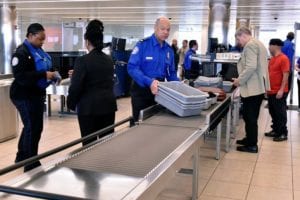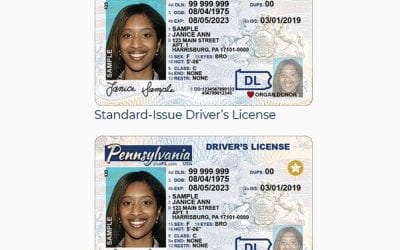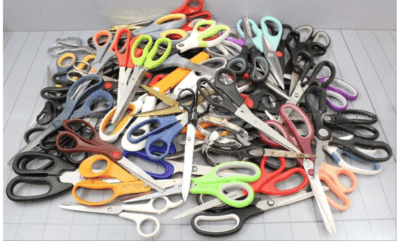TSA airport checkpoint triggers can cause significant delays for air travelers in getting to their flight gates.

On a recent flight from Los Angeles International, the TSA PreCheck line was 15 minutes long before they checked my identification and according to my TSA app, the standard TSA line was about a half-hour long.
I have been repeatedly held up by TSA re-scanning other passengers’ bags. Quite a few were subsequently hand-inspected by a TSA TSO (Transportation Security Officer). The hand inspections were delaying enough, but they caused passengers further delays because they had to repack their carry-ons.
TSA lines and delays are already making air travel difficult. Further delays that air travelers trigger themselves can make air travel even harder than necessary.
Air travelers can usually prevent carry-on bag X-ray rescans by triggering rescans and changing their carry-on habits. Here’s my list of eight carry-on hand inspection triggers that could cause significant delays.
Not checking for prohibited items, sloppy cable and wire packing and packing packaged food and some personal care products in your carry-on can trigger significant delays at TSA checkpoints.
Not checking for prohibited items:
Virtually every time that I’m at a TSA checkpoint, I see someone getting a carry-on hand inspection by TSOs. Typically, it’s because they’ve seen a suspected prohibited item in the passenger’s bag. Whether the air traveler packed the item out of ignorance, purposely, hoping it wouldn’t be detected, or forgot it was there doesn’t matter. It triggered a time-consuming hand inspection.
In 2024, TSA found 6,678 firearms in carry-ons at TSA airport checkpoints. Most every traveler invariably said that they had no idea it was in their bag. Of course, we all know, as does TSA, that it wasn’t magically slipped into their bags.
Travelers must be sure that every item they pack in their carry-on and/or checked luggage is permitted by TSA. Well before you leave on your flight, go to TSA’s What can I bring? web page. On it, you can search for anything you’re not sure that you’re allowed to pack in your carry-on. If an item isn’t listed, you can ask TSA directly on Facebook or “X” at “AskTSA.” When packing, start with an empty bag when you pack to ensure nothing was already in your bag.
If TSA detects a prohibited item in your bag, expect a long delay as a TSO will search every inch of your bags at the airport checkpoint. They might even delay you more with an intrusive secondary screening, complete with an enhanced patdown. According to the prohibited item found, TSA may also question you for a prolonged time, causing you further delay.
Sloppy cable and wire packing:
Most travelers use a variety of electronic devices while on the go. I travel with an iPhone and wear an Apple Watch and hearing aids. I pack an iPad and a Laptop Computer, plus a camera. As a result, like most travelers I pack chargers as well as cables and wires to charge and use the devices.
In my experience, loose or randomly packed cables and wires in your carry-on will often cause you to be pulled aside for a hand inspection. This happened to me a number of years ago at Miami International Airport. After that carry-on hand inspection I spoke to a number of TSA TSOs and supervisors. They told me that when they view collections of tangled cables and wires during their x-ray scans, that they tend to become suspicious. They also said that disorganized cables and wires makes it hard to decypher what’s under or above them.
Cables and wires should be carefully wound and packed in an organized way. I recommend winding all cables and wires then keeping them bundled with an elastic cable tie. Then put the cables in a pouch or two to keep them together and well organized. That way they shouldn’t look suspicious. It also makes it possible to tell what’s under and over them.
Packing packaged food, conditioners, liquid body washes and lotions:
Some foods, especially ones with a high density, can appear like explosives to TSOs during x-ray scanning of carry-ons. Blocks of dense cheeses can look like the explosive C4. Containers of peanut butter can also look like explosives on the scanners. Glycerine, an often used ingredient in many personal care products, has been known to test positive for explosives when TSA uses their explosive trace test. I recommend leaving containers of food for your flight at home. I also recommend that you don’t travel with personal care products containing glycerine.
Misunderstanding the 3-1-1 liquids rule and not declaring large containers of medications and powders can cause significant delays for air travelers at TSA.
Misunderstanding the 3–1–1 liquids rule:
In carry-ons, the TSA liquids rule requires each passenger limit their liquids, gels and aerosols to 3.4 ounces per container. All such containers must fit in and be placed in a single quart-sized resealable bag. Regardless of how much liquid is in a container, no liquids container may exceed a 3.4 ounce capacity. Larger containers are permitted in checked luggage. There are exceptions to the rule for medically necessary liquids.
Not declaring large containers of medications:
Containers in excess of 3.4 ounces of medically necessary liquids in your carry-ons are permitted; however, passengers must declare them to a TSA TSO at the security checkpoint. TSA may require a separate inspection of their contents, but typically, keeping them in their original identifiable container will preclude that.
Not declaring powders and putting them in a bin:
If you bring containers of power-like substances such as protein powder or baby powder larger than 12 ounces you need to declare it, pull it out of your carry-on and into a separate bin for x-ray screening. TSO might require extra screening to confirm its composition.
Poor packing, not placing personal electronics in easy-to-reach locations and packing wrapped presents can all cause you delays at TSA security.
Packing poorly:
Carry-ons, like checked luggage, should be packed in layers so that TSA TSOs can scan your belongings to determine that you have no prohibited items in your bags. If you pack too densely so that they can’t identify what you have, it will trigger a time consuming hand inspection. I recommend packing cubes to help you organize your belongings.
Have TSA PreCheck. Or, be sure that the items you need to pull out of your bag such as large electronic devices and your liquids baggie are easily accessible. You want to be able to slip the items out quickly when you get to TSA security. Plus, they must then be easily repacked them after inspection.
Packing personal electronics badly:
Unless you’re in the Precheck line, you must remove portable electronic devices larger than a cell phone from your carry-ons and place them in a bin with nothing on top or below them.
Bringing wrapped presents:
If TSA detects wrapped presents in your carry-on, they will likely hand inspect the presents. I recommend shipping the presents to your recipient. But if you pack them, wait to wrap them until you arrive at your destination.
Avoiding these triggers does not guarantee that you will avoid extra X-ray scanning of your carry-ons or TSO hand inspections. But it will improve the likelihood that you will get through TSA security quickly without the extra checks.
READ ALSO:
What’s best for traveling in Europe — rental car or train?
How to file consumer complaints and get compensation from airlines
After many years working in corporate America as a chemical engineer, executive and eventually CFO of a multinational manufacturer, Ned founded a tech consulting company and later restarted NSL Photography, his photography business. Before entering the corporate world, Ned worked as a Public Health Engineer for the Philadelphia Department of Public Health. As a well known corporate, travel and wildlife photographer, Ned travels the world writing about travel and photography, as well as running photography workshops, seminars and photowalks. Visit Ned’s Photography Blog and Galleries.




